"I knew I didn't want to be a large-animal veterinarian, and I didn't want to live in North Dakota"
Practice management guru Dr. Ross Clark reveals his thoughts on the past, present and future of veterinary medicine.
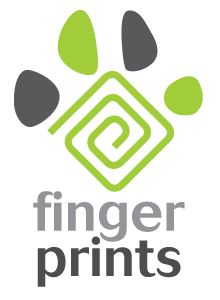
In 1977, when most of my classmates at the Washington State University College of Veterinary Medicine were studying cadavers for gross anatomy or microscope slides for histopathology, I might have been found in the veterinary school library reading Dr. Ross Clark's pioneering articles on practice management in Veterinary Economics. I knew a veterinary hospital was a small business, and I followed Dr. Clark's every word in my journey to become financially successful and emotionally wealthy as a practicing veterinarian and practice owner.
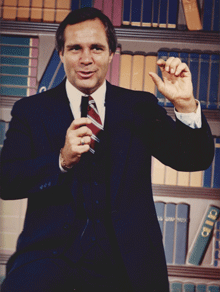
Dr. Clark was a hero to me. A giant. I was stunned when I finally met him in person to find he had a diminutive stature and a giant heart as oversized as his mind.
Leading veterinary practice management for decades, Dr. Clark has always been my mentor. Bright. Passionate. Innovative. Humble. Successful. Generous. Still short.
Here are Dr. Clark's answers to my questions on his life and work ...
Where were you born and raised?
I was born on a farm between Onaga and Wheaton, Kansas. The first three years of grade school I rode a horse, or walked two and a quarter miles to and from the typical one-room schoolhouse.
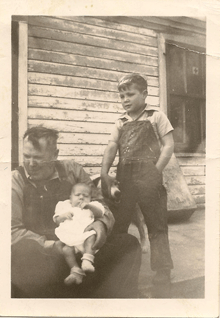
One teacher taught all eight grades and started the furnace in the basement each morning with corncobs and wood. Our grade school usually had about 17 students in five grades. There were three in my class. When it was time for your grade to study a subject, students of that grade would sit on a bench in front of the teacher's desk. We moved to town from the farm at the start of my 4th grade. I was considerably ahead of my classmates because I had been able to listen to portions of all the lessons of all the grades during my three years in the one-room schoolhouse.
What was your first job?
My first job was hand-milking cows and riding the hay stacker team forward and back, beginning at about 5 years of age. The horses' names were Blackie and Babe. We had a wood-burning potbelly stove in the living room and a wood-burning cook stove in the kitchen. It was my job to take my little red wagon and bring loads of wood and stack them about foot high every day.
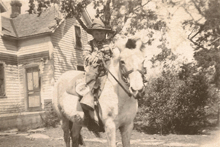
When did you first know you wanted to be a veterinarian?
When I was 10 years old, my mother passed away and I began spending summers with my oldest brother, who was a large-animal veterinarian in Cooperstown, North Dakota. I made my first and second most important career decisions that first summer. First, I knew I didn't want to be a large-animal veterinarian and I didn't want to work in North Dakota. I am not a fan of cold and snow.
What is your greatest joy regarding this profession?
Having major input in choosing and training our team members. Training and practicing with a winning team is like winning the league, regional and national championships, or playing beautiful music with a great orchestra.
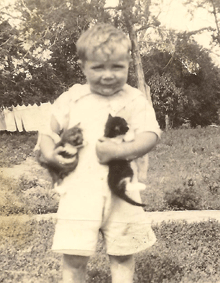
What one pet owner stands out the most after all these years?
One of our clients was an elderly, bachelor gentleman who had a white beagle named Whitey. Whitey had diabetes and Mr. Brazier came to the clinic every morning for more than five years (including holidays) for his insulin injection, because he couldn't bear to give the injection.
Medicine or surgery?
Medicine.
Practice or management?
Management.
What is your perfect idea of happiness?
Perfect happiness would be staying healthy, working out, steaming and hot tub at least five days a week enhanced by living in a comfortable home with children who live an honest life, work reasonably hard, maintain their health and drive carefully.
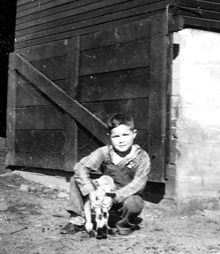
What is your greatest fear?
I worry about my wife's and family's continued good health and that they stay free of automobile or any other kind of accidents.
What is your greatest strength?
Determination and persistence.
Which living person do you most admire?
My long-time business partner Dr. Jim Osborn. We have worked together since 1972 and became partners in 1979. We have always been able to be very candid with each other. This candor and goodwill started with having breakfast at Denny's every Wednesday morning.
When I built a new hospital in 1972, just as Dr. Osborn joined our staff, we had two offices with a divider that could be opened to accommodate a large conference table made up of eight removable leaves. We've been having regular staff meetings to facilitate communication amongst all of our team members ever since. I probably started the extreme candid discussions when he nicely asked if there was anything I would like for him to change. I told him he needed to fix a gap between his upper, middle incisors. We were always free to critique each other's medicine and personal behavior of any kind without fear of pouting or angry retort. He lives an exemplary life of working in his church, volunteering with Boy Scouts of America, always being on time and hardly ever missing a day of work. Jim and his wife, Pam, have raised four wonderful children who have all obtained advanced degrees and live their lives very much like their parents.
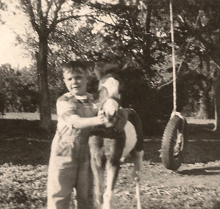
What words or phrase do you most overuse?
“Live it up.”
What is your motto?
We will do anything, anytime, any place that is legal, ethical and moral to provide good care and medicine for pets as long as the client is willing to pay for it.
The first 20 years of my career, we did not have an emergency clinic for animals in Tulsa. We saw emergencies 24/7. Late one evening, I met two elderly ladies at my clinic to see a blocked tomcat. I didn't have the key with me, so I kicked in the door. This cat's owner lived for many more years and regularly informed new staff members about how I had kicked in the door to save her cat.
In September 1989, I rushed to one of our clinics in response to a fire alarm call from our alarm company. The fire truck had just arrived and the flames were already showing through most of the front windows. I hollered to the fireman that there was a back door around the corner of the building. I ran hard to the door, beating the firemen by 50 feet, who were not as enthused as me about my suggestions. I jumped at the door with both feet but only bounced back into the alley on my rear. The door was steel with a steel frame. The fireman then arrived with the huge battering ram and we recovered 16 comatose dogs and cats from the black, smoke-filled kennels. All but three survived.
What's your favorite childhood food that you still love today?
Apple pie.
What memento of your mom or dad do you keep close and why?
My dad's barbed wire collection and my family photo in black and white when I was 4.
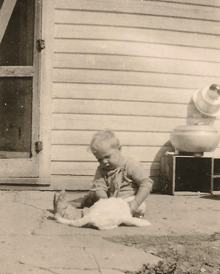
Tell us about your first pet?
Ol' King was a male, mostly white and mostly Collie dog. We could send him to bring in the milk cows every morning and evening.
If you could spend a day with one veterinarian (living or deceased), who would it be and why?
I have been so fortunate to spend days with top veterinarians worldwide through my consulting, practice appraisal and seminar days. The most exciting, inspiring and educational for efficiency in practice management was Dr. Dave Jackson in Fairfax, Virginia, who was featured in an issue of Veterinary Economics.
If you could wave a magic wand and change one thing about veterinary medicine that would help pets, people and the profession, you would …
Build a hospital large enough that the receptionist's only job would be to open the door for clients, their children and their pets. There would be nearly no waiting time. The receptionist would direct clients immediately to the nearest available exam room.
The client would swipe a credit card or ID card supplied by the clinic, which would bring up all the information about the client and their pet on the exam room computer. A light would go on all around the clinic to indicate that a veterinary technician was needed ASAP in the indicated exam room. The technician would do a quick summary of the presenting signs and symptoms and handle anything that was legal, ethical and moral for a technician to do solo and only then summon the veterinarian for an appointment.The exam room doctor would do the exam and then order any further tests, medication or prescriptions required.
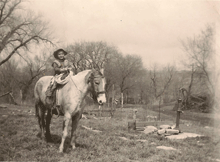
If the patient was ready to go home, a technician, assistant or available receptionist would check out the client in the exam room. I do this in my practice. This is called Express Check Out, and all employees wear a nametag that also says, “Ask me about Express Check Out.”
When I retire, I'm going to?
Sleep in more and work out more. In my extra time I will review all of my photos, videos and slides from the past 75 years and organize them in understandable, chronological and properly labeled DVDs as well as on offsite copies.
When and where are you the happiest?
I'm happiest when I'm with the family traveling to a college football game, then dining with family and friends after the game.
What talent would you like to have?
Playing guitar and singing.

What do you consider your greatest achievement?
Completing 170 books on the medical, genetic and behavioral risk factors of dog breeds recognized by the American Kennel Club.
My team and I are have also nearly finished the second edition of Medical Genetic and Behavioral Risk Factors of Purebred Cats, with 42 breeds of cats recognized by Cat Fancier's Association.
What's your favorite hobby?
Dancing.
Would you encourage your child to become a veterinarian and why or why not?
Yes, I definitely recommend veterinary medicine. My daughter, Kimberly, is in her second year of pre-veterinary medicine. Veterinary medicine is a great profession because we are highly regarded by the general population. We have less governmental regulation than most other professions, other than lawyers who are generally involved in generating regulations.
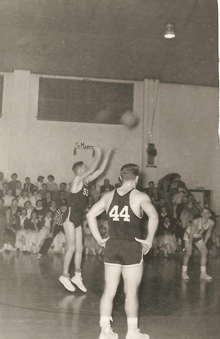
What is the most unusual pet name you've ever heard?
A smart 10-year-old baseball player and fan put a black cat on my exam table in about 1970. I asked the cat's name? He quickly stated, “Orlando Cepeda Pielsticker!”
For the veterinary profession to thrive and not just survive, we must ...
Allow veterinary students to choose specific tracks: small animal, large animal or mixed animal. Then when students graduate with a degree in small-animal medicine, they would need to take another year as an intern or resident in a practice or college specializing in large animal in order to qualify to be a large animal or mixed animal veterinarian. The same would apply to a large animal and a mixed animal practice if they wanted to practice small animal veterinary medicine.
Veterinary Economics Practice Leadership Editor Dr. Marty Becker is a renowned speaker, TV personality and author of The Healing Power of Pets: Harnessing the Amazing Ability of Pets to Make and Keep People Happy and Healthy. Dr. Becker practices at North Idaho Animal Hospital in Sandpoint, Idaho.